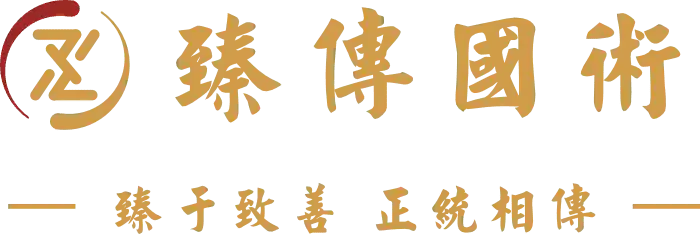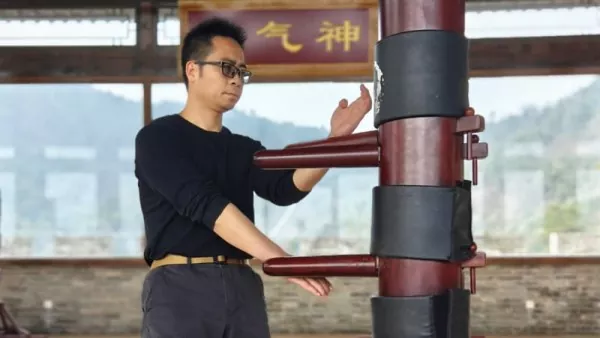The martial arts wing chun wooden dummy is an essential training tool that integrates various techniques, including hand skills, footwork, and leg movements, drawn from the three core wing chun forms: Siu Nim Tao, Cham Kiu, and Biu Jee. It perfectly embodies the combat principles and fighting strategies of wing chun.
Crafted from wood, the wing chun practice dummy is designed with arms and legs that offer slight movement (elasticity), simulating a real opponent for training. This unique tool helps strengthen the contact points on the hands, enhancing wing chun basics, and improves the overall coordination of the body, making footwork more agile and precise.




I like it
The techniques of the wooden dummy emphasize integrated force generation. One should learn to combine the strength of all parts of the body. By pushing off the ground with the legs and twisting the waist and hips, transfer the strength to the arms and fists, making the attacks more powerful. At the same time, one should master the timing and rhythm of force generation to avoid exerting force too early or too late.
great lesson
Is there anyone in the United States who wants to go to Master Liu’s place together?
It’s really worth recommending.
The techniques of the wooden dummy have significantly improved my previous learning. This is my evaluation.
Finally, I’ve managed to learn this course. It’s really exciting!
I’ve just started learning. Once I truly understand its essence, I’ll share a detailed account of my experience.
Oh, the legendary wooden dummy technique. I love it.
The bruises on my hands are proof of my progress.
I thought training on the Muk Yan Jong was about strength, but it’s really about precision. Every strike reveals my mistakes, and the dummy ‘reminds’ me mercilessly of what needs adjusting.
The wooden dummy doesn’t lie. It won’t ‘cooperate’ with you, so if your moves aren’t precise, it will tell you—very honestly!
The first time I trained with the dummy, I felt like I was the one getting hit. Any stiffness in my movements, and the recoil lets me know I did it wrong.
Much harder than I expected! Sifu said ‘striking the dummy’ isn’t about brute force, but about making your attacks flow better. Now I finally understand.
The arms of the dummy don’t move. If you’re wrong, you’re wrong—no excuses. This training is solid.
Training with the dummy is a battle with yourself. The stiffer you are, the harder it ‘hits’ back.
It’s amazing how all three forms come together! The techniques I learned before suddenly have a practical application on the dummy.
At first, I thought it was just a training tool. After some time, I realized it taught me more than I ever expected.
The Muk Yan Jong is all about details. Even the slightest mistake in hand positioning, and it will ‘tell’ you.
If you think you’ve mastered Wing Chun, try training with the wooden dummy. It will make you reassess your skills.
Wing Chun is all about close-range combat. The wooden dummy taught me how to generate maximum effect in minimal space.
Every session leaves my arms sore, but the sense of progress is addicting!
Muk Yan Jong training really tests your precision. If your angle is even slightly off, the recoil will let you know.
With the wooden dummy, training alone is no longer a problem. Practicing a little every day, I feel my body adjusting naturally.
It won’t give you any feedback, but its ‘silence’ is the best feedback—you move correctly, it flows; you move incorrectly, it feels awkward.
Looks easy in videos, but when you train yourself, you realize controlling the dummy’s recoil is an art in itself
After a while, training with the dummy feels like having a conversation with it.
The true power of Wing Chun is fully realized on the wooden dummy. Suddenly, all techniques become seamless.
It made me realize that just learning techniques isn’t enough—applying them in real combat is the key.
I think the training with the wooden dummy focuses on developing the body’s muscle memory. Only when the muscle memory is formed can one’s hands strike out even before the brain has a chance to react.
This is also the best combination for practicing speed and combo moves, and it’s really worth recommending.
Crystal-clear footage, every detail is visible. Nice!
I always thought training on the wooden dummy was just about striking, but it also involves redirecting force, adjusting angles, and controlling distance. The course explains these in great detail.
The instructor’s explanations are clear and to the point, especially the part on neutralizing recoil, which saved me from many mistakes.
The translation is spot on—no awkward literal translations, just smooth and understandable explanations.
Now I understand why Muk Yan Jong training is so crucial for combat. It’s not just about techniques but also conditioning reflexes.
Everything is so clear in the video. Every move has a purpose, and the slow-motion replays are really helpful!
Training on the wooden dummy made me realize my basics still need work. Time to go back and review.
Great course quality—clear audio, smooth video, and an excellent learning experience!
This course redefined my understanding of power—it’s not brute force, but skillful application. Huge gain
Training on the dummy made me realize that Wing Chun’s power generation is far more complex than I thought.
The instructor’s demonstrations are incredibly precise. Every strike and step has an internal logic, not just random movements.
The course structure is well-designed—starting with the basics and progressing gradually, making it manageable.
I used to think the wooden dummy was just a training tool, but now I see it as an honest teacher.
Slow-motion with step-by-step breakdowns,this course is made with real care, unlike those low-quality martial arts tutorials.
Wooden dummy training has definitely made my movements tighter
The breakdown of angles, stances, and power points is incredibly detailed.
If I had to figure this out on my own, it might take me years. This course saved me so much time!
The instructor’s explanations are highly logical. It’s not just about teaching movements, but the principles behind them. This is real teaching!